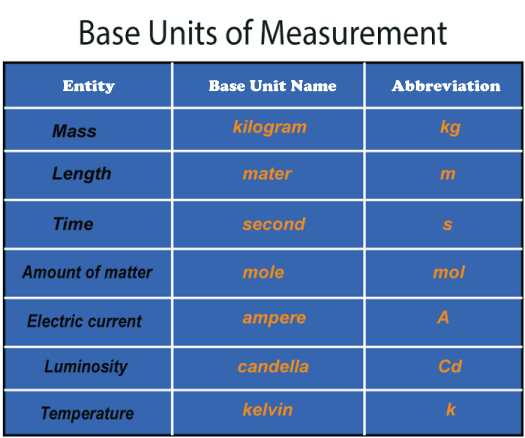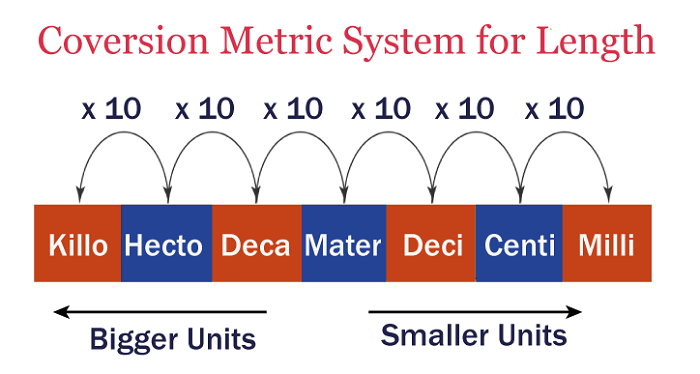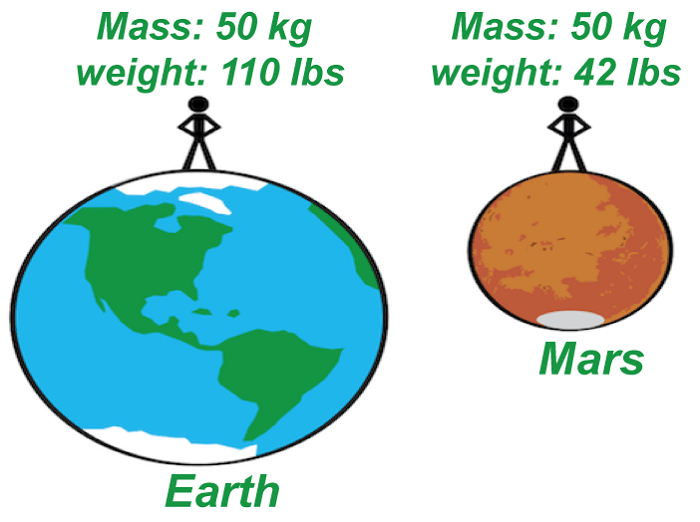Mass DefinitionIntroductionAccording to the most basic definition, the quantity of matter that makes up an object is its Mass. Along with volume and density, it is one of the most fundamental characteristics of matter and is used to describe the behaviour of big and small objects. Understanding the natural world and the forces that shape it requires understanding Mass. 
Today, physics, chemistry, and engineering all use the concept of Mass as a fundamental building block. It is used to explain everything from the dynamics of galaxies to the behaviour of subatomic particles. Mass in engineering, used to design and construct everything from cars to aeroplanes, is one of its most significant applications. Knowing an object's Mass is essential for ensuring that it can be transported effectively and safely and for calculating the forces acting on it. Engineers could only create many of the technologies we rely on daily if they had a grasp of Mass. The study of Mass is crucial to our comprehension of the natural world, and it has a long and complicated history that has sparked many scientific and technological advances. The idea of Mass is a crucial tool for scientists and engineers, whether we are investigating the behaviour of subatomic particles or developing new technologies. What is Mass, and How is it Measured?
The quantity of matter that makes up an object is measured by its Mass, a fundamental property of matter. It is one of the most fundamental characteristics used to describe how objects behave and is important in various disciplines, including biology, engineering, physics, and chemistry. Mass measurement is a crucial component of scientific research and has numerous real-world applications in our daily lives. 
A standard unit of measurement is required to measure Mass. According to the International System of Units (SI), the kilogram is the standard unit of Mass. The Mass of a specific platinum-iridium alloy cylinder kept at the International Bureau of Weights and Measures in France is what this definition means. The International Prototype of the Kilogram, or this cylinder, is the primary reference standard for mass measurements worldwide. There are numerous ways to measure Mass. Utilizing a balance, which compares the Mass of the measured object to a known standard, is the most popular technique. The balance operates by comparing the masses of two objects on opposite sides of the balance using a lever system. A set of calibrated weights is frequently used as the reference object in comparisons to establish the object's Mass under consideration. A spring scale is another tool for determining an object's Mass because it measures the gravitational pull on it. Then, using the equation mass = force of gravity/acceleration due to gravity, one can determine the object's Mass. This method is frequently used when a balance is unavailable or impractical. In addition to these techniques, specialized tools are employed for Mass measurement in particular applications. For instance, mass spectrometry is used in biology and chemistry to determine the masses of atoms and molecules. By dividing the atoms or molecules according to their mass-to-charge ratio, this method determines the Mass. Measuring Mass is an essential science component with numerous real-world uses. Mass measurement is an essential tool for comprehending the world around us, from calculating the weight of ingredients in cooking to calculating the Mass of celestial bodies in space. The History of Mass and its Importance in Physics The history of Mass is lengthy and intricate, going back to antiquity. The ancient Greek philosopher Aristotle was among the first to suggest that matter comprises the four fundamental elements of Earth, air, fire, and water. He also proposed that objects have an innate quality called "heaviness." This characteristic, which served as the basis for the modern idea of Mass, was thought to cause objects' downward motion. Scientists and philosophers were still studying the nature of matter and its properties in the centuries that followed. The first person to refer to Mass as an inherent property of matter that determined its resistance to acceleration was the 17th-century physicist Isaac Newton. He developed the laws of motion, which explain how moving objects behave and popularised the idea of gravitational force based on an object's Mass. Since then, the idea of Mass has been crucial in advancing modern physics. The idea of mass-energy equivalence was introduced in the early 20th century by Albert Einstein's theory of relativity, which produced the famous equation E=mc2. This equation demonstrates the equivalence and interchangeability of Mass and energy and profoundly impacts how we perceive the universe. Mass is a key idea in various physics disciplines, such as particle, Astro, and cosmology. It explains the dynamics of galaxies and black holes, the behaviour of subatomic particles, and the universe's characteristics. Our knowledge of nature and the forces that shape it continues to be greatly influenced by the study of Mass. Mass vs Weight: Understanding the DifferenceAlthough Mass and weight are frequently used interchangeably, their meanings differ. Understanding the distinction between Mass and weight is essential for comprehending how objects behave and how forces act on them. 
A fundamental property of matter is Mass, which quantifies how much matter is present in an object. It is an inherent characteristic of an object that does not change concerning its location or gravitational field. The kilogram is the SI unit of Mass. On the other hand, weight is the effect of gravity on an object. It is based on the object's Mass and the potency of the gravitational field around it. An object's weight can change depending on its location and the gravitational field's strength. The newton is the weight unit used by the SI. Consider an object on the surface of the Earth or the Moon to comprehend the distinction between Mass and weight. Its Mass would be the same on Earth and the Moon because the object's Mass is independent of its location. But because the gravitational fields of each of these bodies have different strengths, the object's weight would vary on each of them. The distinction between Mass and weight is significant in several fields, from physics and engineering to health and fitness. In physics and engineering, an object's weight determines the force acting on it, whereas its Mass determines its momentum and energy. Weight calculates a person's BMI (Body Mass Index) and risk for specific medical conditions. In contrast, Mass is frequently used in health and fitness to monitor changes in body composition. Understanding the distinction between Mass and weight is crucial for comprehending how objects behave and how forces act upon them. Even though they are frequently used interchangeably in everyday speech, they are distinct properties with significant ramifications for many fields. The Role of Mass in the UniverseThe fundamental characteristic of matter, Mass, is crucial in determining how the universe behaves. One of the most significant forces in the universe, the gravitational attraction between objects, is caused by it. The Mass distribution determines the large-scale structure of galaxies, clusters of galaxies, and even the entire universe. 
Mass distribution greatly influenced the formation of the first structures in the early universe. The first stars and galaxies were created when tiny changes in matter density resulted in matter clusters forming. Galaxy clusters and superclusters were created due to the gravitational attraction between these structures as they grew bigger and bigger over time. The distribution of Mass in the universe impacts how fast it is expanding. The quantity and distribution of Mass in the universe control its expansion rate and outcome. The universe will eventually stop expanding and start contracting, known as the Big Crunch, if there is enough matter. The study of dark matter and dark energy, two enigmatic substances that account for a sizeable portion of the universe, also depends on Mass. Dark energy is thought to be a type of energy that permeates all of space and accelerates the universe's expansion. In contrast, dark matter is thought to be composed of particles that interact only through gravity. In the end, Mass plays a significant and fundamental role in the universe. Understanding the most enigmatic and elusive elements of the cosmos is essential. It shapes the structure and evolution of galaxies, clusters of galaxies, and the universe. Mass in Everyday Life: Examples and ApplicationsA fundamental idea in physics called Mass is important in many facets of daily life. Mass impacts a wide range of physical phenomena that we experience every day, from the weight of our bodies to the fuel efficiency of our cars. Transportation is a prime example of how Mass is used in daily life. A vehicle's Mass impacts its acceleration, speed, and fuel economy. To accelerate, heavier vehicles need more energy, which can lower their fuel efficiency. Furthermore, a vehicle's Mass is crucial in determining its safety, as heavier cars tend to be more stable and resilient to impacts than lighter ones. Numerous other facets of fitness and health also involve Mass. A person's Mass and height are used to calculate their body Mass index (BMI), which measures body fat. It is frequently used to gauge a person's fitness level and general health and can be used to determine whether an individual is overweight or obese. Mass significantly influences the performance of athletes in the world of sports. Athletes competing in weightlifting and powerlifting must lift weights that are a specific mass, whereas, in many other sports, an athlete's Mass can influence their speed and endurance. The weight of the equipment, such as balls and racquets, can also impact performance in sports like tennis and golf. Environmental science also uses Mass because an object's Mass influences how it affects the environment. For instance, the number of pollutants released into the air or water can influence how harmful they are to the environment and people's health. In conclusion, Mass plays a part in daily life in many different and extensive ways. Mass plays a crucial role in many facets of the world, from transportation and health to sports and the environment. We can better comprehend and interact with the physical world by comprehending the concepts of Mass and how they operate. Mass and Energy: The Famous Equation, E=mc²One of physics' most well-known and significant equations is E=mc2, which profoundly relates Mass and energy. According to the formula, an object's energy (E) is equal to its Mass (m) times the square of the speed of light (c). 
This equation shows that Mass and energy can be transformed into one another and are interchangeable. Given that the speed of light is a significant constant, even a small amount of Mass can yield significant energy. According to this principle, small amounts of Mass are transformed into enormous amounts of energy, which forms the basis for nuclear power and weapons. Understanding the behaviour of particles in the universe requires an understanding of the equation E=mc2. The energy released in nuclear reactions, such as those in the sun and stars, is calculated using this method. It also significantly impacts the theory of relativity, which explains how objects behave under extreme gravitational fields and at high speeds. The Conservation of Mass: Understanding the Law of ConservationAccording to the law of conservation of Mass, a fundamental tenet of physics, the total Mass of a closed system stays constant over time, regardless of any physical or chemical changes that might occur inside the system. In other words, a system's overall Mass is unchanged before and after a physical or chemical change. This law is founded on the idea that Mass can only be changed from one form to another, not created or destroyed. This means that the total Mass of the reactants and the total Mass of the products must match in any physical or chemical process. Numerous crucial scientific and engineering fields, particularly chemistry and environmental science, use the law of conservation of Mass. Calculating the quantities of reactants and products in chemical reactions and balancing chemical equations are done using this method. In environmental science, it is also used to monitor the dispersion and transformation of pollutants within ecosystems. The Future of Mass: New Discoveries and AdvancementsWith discoveries and technologies being made regularly, studying Mass is still active. The hunt for the elusive Higgs boson particle, discovered in 2012 by the Large Hadron Collider (LHC) at CERN in Switzerland, is one fascinating area of research. New understandings about the nature of Mass and the basic building blocks of matter have emerged due to the Higgs boson's discovery. New technologies and discoveries also expand our knowledge of Mass and its place in the universe. We are now better understanding the large-scale structure of the universe, for instance, thanks to new techniques for determining the Mass of far-off objects like galaxies and black holes. A new generation of materials with distinctive and intriguing mass properties is also being created due to materials science and engineering developments. These materials may be used in various industries, from aerospace to energy production. Conclusion: Summing up the Importance of Mass in Science and SocietyFinally, Mass is an important idea in physics with numerous uses in science and society. Understanding the behaviour and characteristics of Mass is crucial to our comprehension of the universe and our capacity to create novel technologies and address pressing issues. Mass is essential to comprehend how matter and energy behave, from the laws of motion to energy conservation. It serves as a fundamental building block for many of the technologies that shape our world and is essential to studying everything from subatomic particles to galaxies and black holes. Furthermore, the Mass has significant uses in various disciplines, including environmental science and engineering. New materials, technologies, and products that are reshaping our world and determining the course of our future have been made possible thanks to improvements in our understanding of Mass. The study of Mass is a significant and exciting field with much room for growth and discovery. We can anticipate discoveries and the creation of cutting-edge technologies as we continue to investigate the characteristics and behaviour of Mass.
Next TopicNanotechnology Definition
|
 For Videos Join Our Youtube Channel: Join Now
For Videos Join Our Youtube Channel: Join Now
Feedback
- Send your Feedback to [email protected]
Help Others, Please Share










